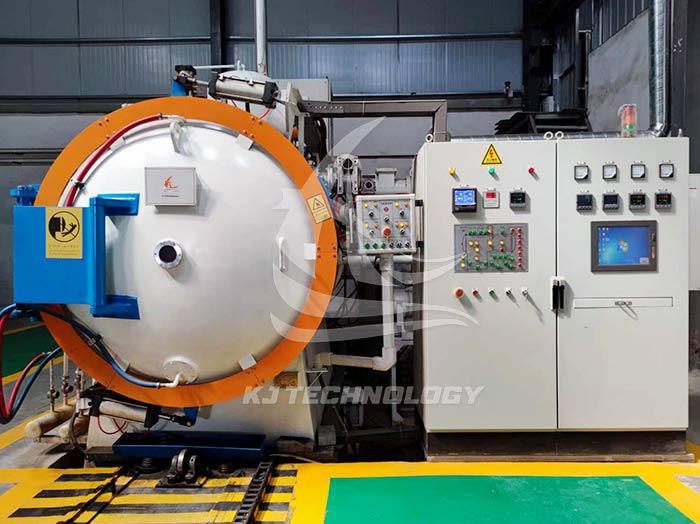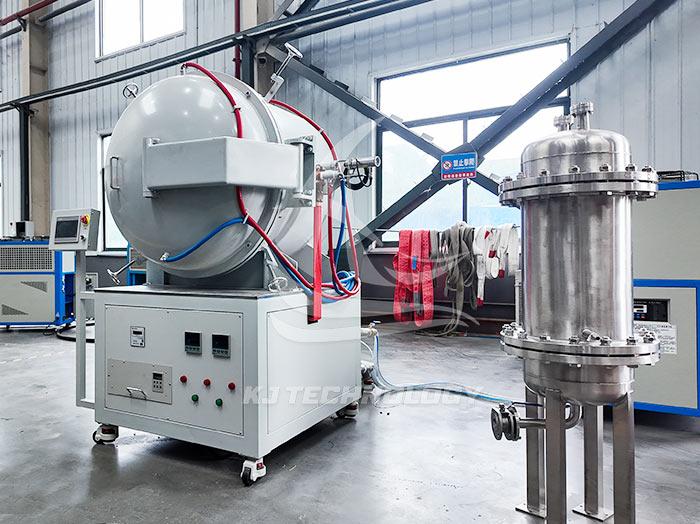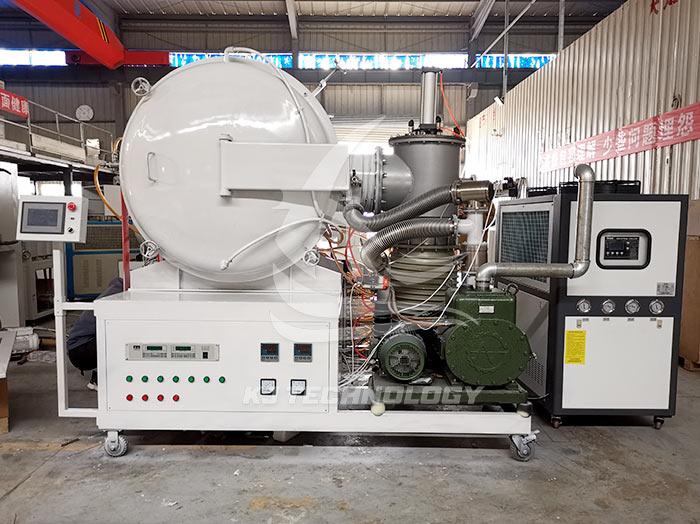Application fields of pressure sintering furnace
 07-09-2025 Author: KJ technology
07-09-2025 Author: KJ technology
The pressure sintering furnace achieves material densification through a high-temperature and high-pressure environment, and is widely used in the field of high-performance material preparation. Its core application areas and typical scenarios are as follows:
1. Ceramic Materials: Densification of Structural and Functional Ceramics
Structural ceramics
Alumina and silicon nitride ceramics: Pressure sintering furnaces can eliminate pores, improve bending strength (such as silicon nitride ceramics with bending strength of over 1000MPa) and fracture toughness (such as 7.83MPa · m ¹/²), suitable for wear-resistant parts such as cutting tools and bearings.
Silicon carbide ceramics: sintered at a pressure of 10MPa, the porosity can be reduced to below 1%, and the bending strength can exceed 100MPa. They are used in sealing rings, high-temperature furnace linings, and other scenarios.
Bioceramics: such as hydroxyapatite (HA) ceramics, pressure sintering can reduce abnormal grain growth, improve biocompatibility, and are used for artificial bone and dental implants.
Functional ceramics
Piezoelectric ceramics: By optimizing grain orientation through pressure sintering, the piezoelectric coefficient can be increased (such as PZT ceramics with a d ③③ value of over 500pC/N), which is applied in ultrasonic transducers and sensors.
Transparent ceramics: such as yttrium oxide (Y ₂ O ∝) transparent ceramics, pressure sintering can eliminate light scattering centers, with a transmittance of over 85%, used for laser windows and high-pressure sodium lamp tubes.
2. Metal based composite materials: interface bonding and performance enhancement
Diffusion Bonding
Titanium based/aluminum based composite material: Under a pressure of 5MPa, the interface bonding strength between metal and ceramic reinforcement phase (such as SiC fiber) is increased by 30%, suitable for aerospace skin and engine blades.
Tungsten copper alloy: By filling the pores with liquid-phase copper and pressure sintering, the relative density reaches 99%, and the thermal conductivity is increased to 180W/(m · K). It is used for electronic packaging and spark electrodes.
Special powder metallurgy
High speed steel: Pressure sintering can refine carbide particles (size ≤ 1 μ m), with a hardness of over 65HRC and a 50% increase in wear resistance. It is used for cutting tools and molds.
Stainless steel powder: sintered at a pressure of 9.5 MPa, with a density of 99.5% and better corrosion resistance (salt spray test ≥ 1000 hours) than traditional castings, used in marine engineering and chemical equipment.
3. Hard alloy: the core process of cutting tools and wear-resistant parts
Tungsten cobalt alloy
Pressure sintering homogenizes the WC grain size (average 0.5 μ m), with a hardness of 92.5HRA and a bending strength of 4000MPa. It is used for mining drill bits and rolling cutters.
Tungsten titanium alloy
By suppressing the abnormal growth of TiC through pressure sintering, the tool life is extended by 40%, making it suitable for cutting difficult to machine materials such as titanium alloys and high-temperature alloys.
4. Emerging fields: Innovative applications of cutting-edge materials
intraocular lens
Pressure sintering sapphire crystals in an inert atmosphere reduces dislocation density to below 10 ³/cm ² and achieves an optical transmittance of 92%. It is used for LED substrates and mobile phone covers.
Carbon/Carbon Composite Materials
Pressure sintering combined with chemical vapor infiltration (CVI) results in a material density of 1.9g/cm ³ and a 60% increase in the adhesion of the anti-oxidation coating. It is used for rocket throat liners and brake discs.
Post processing of 3D printing materials
Pressure sintering of metal 3D printed parts (such as SLM process) eliminates porosity (from 5% to 0.1%), increases fatigue life by three times, and is suitable for aviation structural components and medical implants.
5. Industrial manufacturing: key equipment for large-scale production
automotive industry
Pressure sintered turbocharger rotor (silicon nitride ceramic), temperature resistance up to 1200 ℃, speed exceeding 200000 revolutions per minute, improving engine efficiency by 15%.
Cutting tools
After pressure sintering of silicon nitride ceramic cutting tools, the cutting speed reaches 3000m/min (traditional tools ≤ 500m/min), and the processing efficiency is increased by 5 times.
Electronic materials
Semiconductor ceramics (such as AlN) are pressure sintered with a thermal conductivity of 230W/(m · K) and used as heat dissipation substrates for high-power electronic devices.








